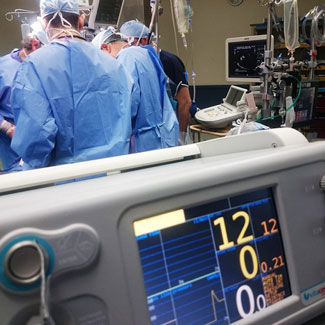Clinical Publication Group

Compartment Monitoring in Tibial Fractures
November 2, 2020
During a period of 2 years and 7 months, a total of 116 patients with tibial diaphyseal fractures were monitored for anterior compartment pressure. Using Whiteside’s recommendation measuring delta pressure (30mmHg) as a threshold for fasciotomy, all cases of acute compartment syndrome were properly diagnosed, with no missed cases. If the delta pressure were not

Conservative Treatment of Anterior Chronic Exertional Compartment Syndrome in the Military, with a Mid-term Follow-up
October 27, 2020
Using a conservative treatment plan proved successful in returning 65% anterior chronic exertional compartment syndrome (CECS) patients to active duty without surgery. The plan consisted of numerous outpatient treatments such as stretching, massage, supplementation, with a focus on gait retraining. The continuous measuring ability of the C2Dx Indwell Slit Catheter allowed for accurate execution of

Lower Leg Compartment Syndrome after Appendicectomy
October 22, 2020
This case highlights the importance of a child presenting with lower leg pain and increasing analgesic requirements should have an urgent orthopaedic referral to rule out compartment syndrome as the consequences of a delayed diagnosis can be extremely severe. Abstract This case report acknowledges the importance of maintaining a high index of suspicion for compartment

Acute Compartment Syndrome of the Extremities
October 21, 2020
In a retrospective study of 1,184 patients investigating the use of continuous intra-compartmental pressure monitoring for the diagnosis of acute compartment syndrome reported an estimated sensitivity of 94%, specificity of 98%, and a negative predictive value of 99%, using the intraoperative clinical findings as the gold standard. Abstract Acute compartment syndrome most often develops soon

Delayed Onset of Acute Limb Compartment Syndrome with Neuropathy After Nonarterial Extracorporeal Membrane Oxygenation Therapy
October 7, 2020
Delayed diagnosis and treatment can lead to permanent dysfunction in the limb involved. For early diagnosis, ICP monitoring is one of the most important objective findings. In this case, the medical staff did not recognize the risk of ALCS and ICP was not monitored; therefore, the diagnosis of ALCS was delayed resulting in permanent damage

The Pathophysiology, Diagnosis and Current Management of Acute Compartment Syndrome
September 21, 2020
Many authors advocate the use of intra-compartmental pressure monitoring in all at risk patients and those where extra clinical vigilance is advised. It has also been suggested that pressure monitoring may detect acute compartment syndrome prior to the onset of clinical signs, in addition to reducing the time to fasciotomy and the development of subsequent

A Case Report of Acute Exertional Compartment Syndrome with Peroneal Nerve Palsy in an Adolescent Athlete
September 18, 2020
Compartment syndrome is a dangerous and potentially disastrous condition for a patient, which if not treated in a timely fashion can have devastating consequences. If there is high clinical suspicion of compartment syndrome intra-compartmental pressure should be measured immediately using a STIC intra-compartmental pressure monitor to confirm the proper diagnosis and assist in data-driven decisions.

Hotknife dissection of the latissimus dorsi muscle for dynamic cardiomyoplasty
September 13, 2020
Hotknife dissection of the latissimus dorsi muscle for dynamic cardiomyoplasty Authors: Masao Takahashi; Shigeyuki Tomita; Hiroshi Ohtake; Nobuyuki Tanaka; Michio Kawasuji; Yoh Watanabe

Acute Exertional Compartment Syndrome with Rhabdomyloysis: Case Report and Review of Literature
August 31, 2020
The ability for a clinician to promptly diagnose and initiate proper treatment for acute exertional compartment syndrome (AECS) is crucial for the prevention of severe or devastating consequences for the patient. Abstract Acute exertional compartment syndrome (AECS) is characterized by a rise in pressure within a closed fascial space in the absence of a specific

A Sneaky Surgical Emergency: Acute Compartment Syndrome. Retrospective Analysis of 66 Closed Claims, Medico-Legal Pitfalls and Damages Evaluation
August 25, 2020
Proper management of Acute Compartment Syndrome minimizes or avoids the sequel associated with a late diagnosis and may reduce the risk of malpractice claims. As acute compartment syndrome is a clinical emergency, early findings are crucial. Abstract Acute compartment syndrome (ACS) is a clinical condition with potentially dramatic consequences if it not diagnosed early. Good